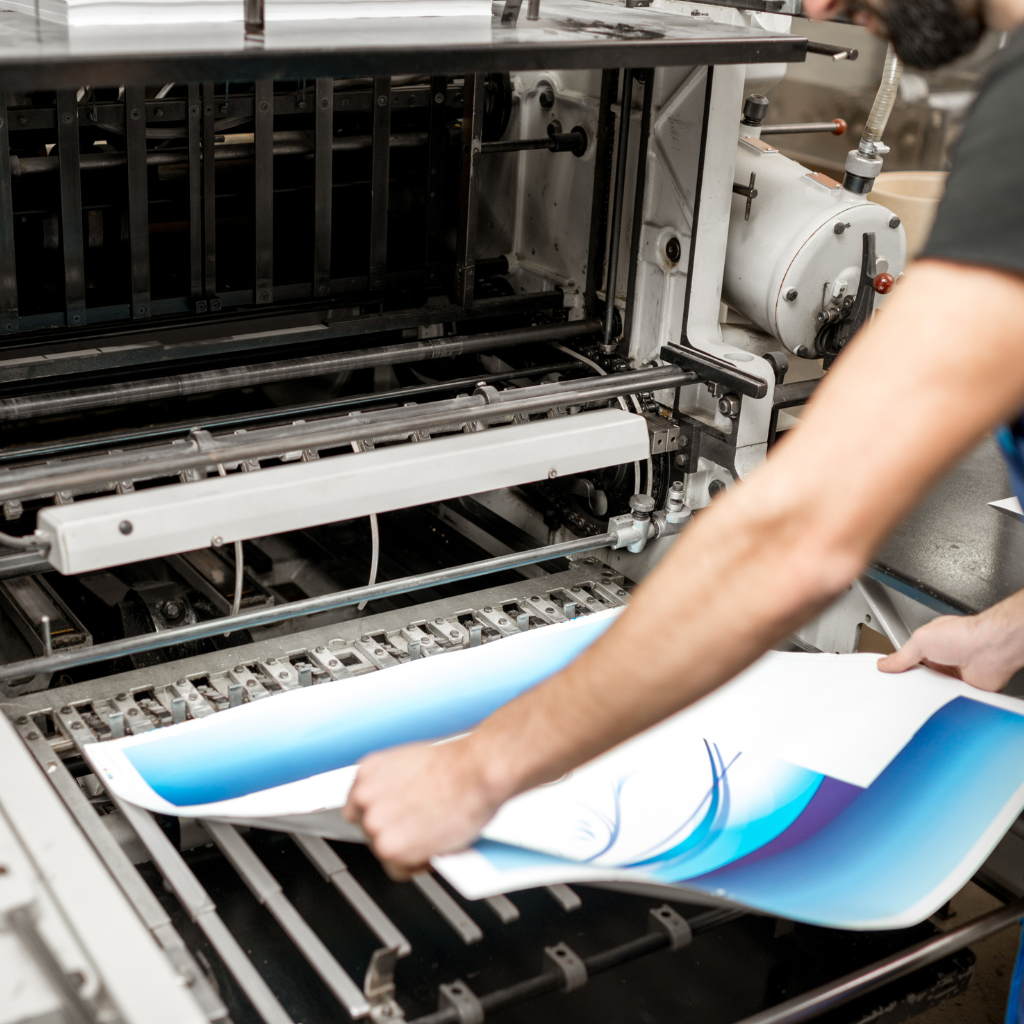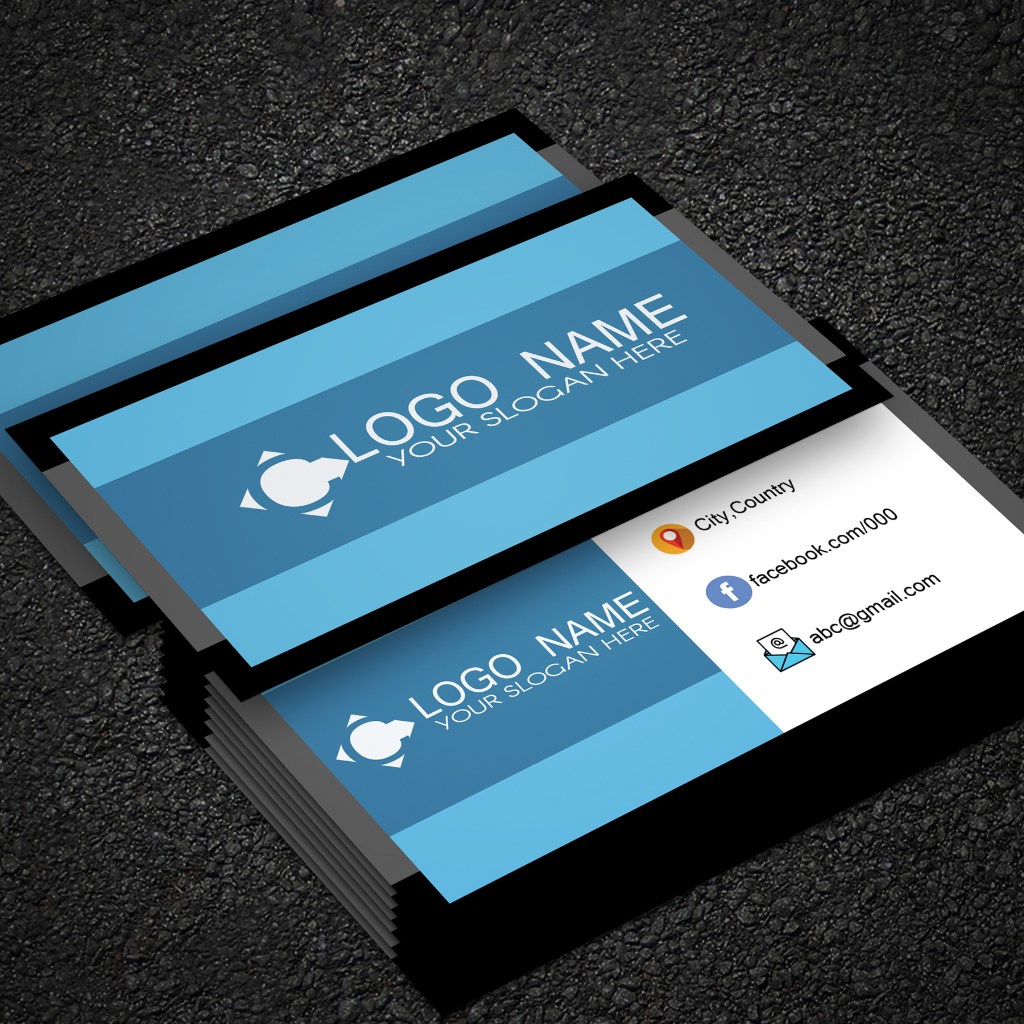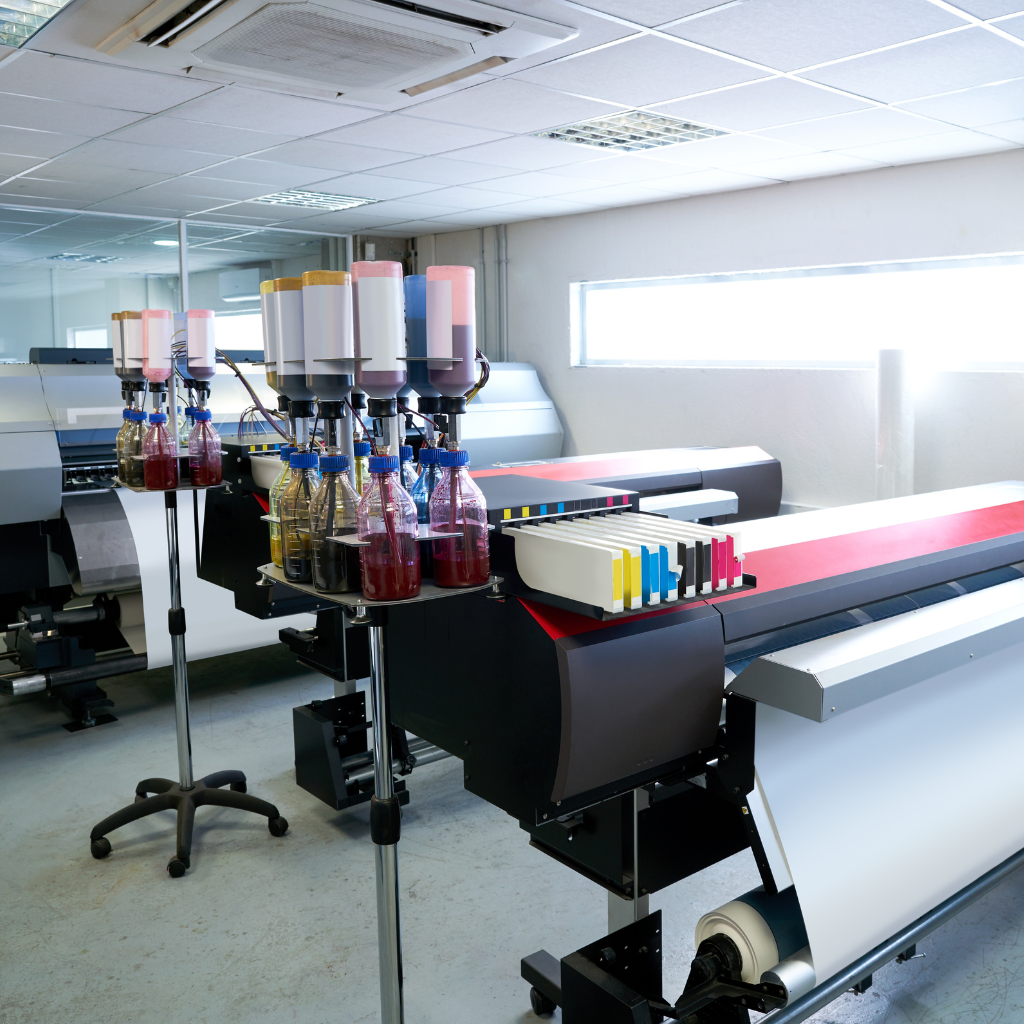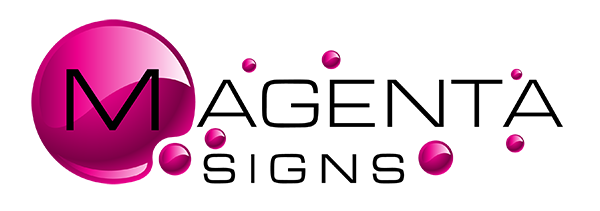Digital printing is a modern printing technique that directly transfers digital images onto media substrates using inkjet or laser printers. This method eliminates the need for plate-making, significantly reduces setup times, and is highly cost-effective for short to medium runs. It offers exceptional flexibility with the ability to produce customised prints on demand. Digital printing guarantees sharp, vibrant prints, ideal for various applications, from business cards to promotional materials, including different types of flyers used in marketing campaigns. Further exploration reveals its comparative advantages and broad utility across multiple sectors.
Key Takeaways
- Digital printing directly transfers digital images onto media, eliminating traditional plate-making.
- Offers rapid prototyping and on-demand printing, enhancing workflow efficiency.
- Provides high customisation and variable data printing for personalised products.
- More cost-effective for short to medium runs, with minimal setup costs.
- Utilises various techniques like inkjet and laser printing, suited for diverse applications such as business cards and custom floor mats.
What is Digital Printing, and How Does it Work?
Digital printing is the process of transferring a digital image directly onto various surfaces of media substrates, eliminating the need for traditional plate-making.
This method primarily employs inkjet or digital printers that deposit pigment or dye-based inks onto the material, facilitating rapid prototyping and on-demand printing capabilities.
The efficiency and versatility of digital printing stand in contrast to conventional printing techniques, offering advantages in speed, cost, and customisation.
Understanding the Digital Printing Process
Exploring the domain of digital printing reveals a transformative process that converts digital images directly from a computer file to a variety of media surfaces. Unlike traditional methods that use printing plates, digital printing utilises digital files for image transfer that directly applies ink to the material. This evolution in printing technology enhances print quality and streamlines the workflow in commercial digital printing processes.
| Aspect | Impact on Printing |
|---|---|
| No Printing Plates | Reduces setup time and cost |
| Advanced Printers | Allows high-resolution and precise prints |
| Digital Files | Facilitates quick modifications and iterations |
Digital printing technology represents a significant shift in how printing companies approach production, favouring efficiency and customisation in modern printing methods.
The Role of Digital Printers and Inkjet Printers
At the heart of digital printing technology, digital printers, particularly inkjet printers, play a pivotal role. These devices streamline the printing process by directly transferring digital images onto various media types.
Here’s how they impact the industry:
- Precision and Versatility: Inkjet printers offer high-resolution outputs by precisely placing micro-droplets of digital ink onto the substrate.
- Speed and Efficiency: Modern digital printers facilitate rapid production, significantly reducing turnaround times compared to traditional methods.
- Cost-Effectiveness: With minimal setup required, digital printing lowers the cost for small to medium print runs.
- Customisation: Digital technologies allow for easy alterations and on-the-fly customisation, enhancing printing services’ ability to meet specific customer demands.
This integration of advanced printing machines and technologies continues to revolutionise the printing landscape.

Digital vs. Traditional Printing Methods
Understanding the distinctions between digital and traditional printing methods sheds light on the broader implications for industries reliant on the mass production of printed materials. Digital printing, utilising inkjet and laser printers, offers a cost-effective solution for on-demand printing of brochures vs leaflets, without the need for printing plates. These older techniques require extensive setup with dedicated plates, making them suitable for high-volume runs but less flexible.
FeatureDigital PrintingTraditional Printing
| Feature | Digital Printing | Traditional Printing |
|---|---|---|
| Setup Time | Minimal | Extensive |
| Cost Effectiveness | High for low volume | High for high volume |
| Flexibility | High | Low |
| Technology Used | Digital printing presses | Offset, Screen printing |
Digital printing presses provide unparalleled flexibility and efficiency, revolutionising how businesses approach printing tasks.
What Are the Advantages of Digital Printing?
Digital printing offers significant advantages by enabling on-demand and variable data printing, which allows for customisation and just-in-time production without excess inventory.
This method proves cost-effective for short to medium print runs due to the elimination of the costs associated with traditional plate-making processes.
The absence of a printing plate in digital printing not only reduces setup times but also lowers the environmental impact, enhancing operational efficiency.
Benefits of On-Demand Printing and Variable Data Printing
One of the primary advantages of digital printing technology is its capacity for on-demand printing and variable data printing (VDP). This aspect of digital printing services markedly enhances the flexibility and responsiveness of printing options, offering distinct benefits:
- Customisation: VDP allows for high-level personalisation of each print piece, adapting data for individual recipients without slowing down the printing process.
- Efficiency: On-demand services eliminate the need for extensive inventory stocks, reducing waste and storage costs by printing only as needed.
- Speed: Digital printing machines can produce materials swiftly, which is essential for urgent jobs or tight deadlines.
- Adaptability: Types of digital printing can handle various printing materials, making them versatile for different applications and client needs.
Cost-Effective Solutions for Print Runs
While evaluating the advantages of digital printing, it becomes apparent that its cost-effectiveness is particularly pronounced in smaller print runs.
Digital printing offers a highly efficient process for small-run jobs, where traditional printing techniques may prove too costly due to initial setup requirements. Digital presses eliminate many of the labour-intensive steps involved in conventional printing, thereby allowing for a lower cost per unit in the short run.
Furthermore, digital printing can be used on demand, reducing the need for extensive inventories and minimising waste. This adaptability makes digital printing a cost-effective solution for businesses that require timely updates or personalised content, along with considering other factors.
Essentially, the scalability and flexibility of digital presses cater to market demands efficiently, underscoring digital printing’s role in modern, cost-effective solutions.
Why Digital Printing Doesn’t Require a Printing Plate
Moving beyond the cost considerations, another significant aspect of digital printing technology is its independence from traditional printing plates. This shift enhances several facets of the printing process:
- Speed and Efficiency: Without the need to create and prepare plates, digital files can be sent directly to printers like inkjet printers, drastically reducing setup times.
- Flexibility in Printing: Modifications to the digital image or design can be made up to the last minute, promoting dynamic adjustments and experimentation.
- Cost Reduction: Eliminating plates removes a layer of expense, particularly for short runs where the cost of plate production can be prohibitive.
- Consistent Image Quality: Digital printing technology maintains high image quality, as every print is a direct feed from the original digital file, reducing image degradation overruns.
How to Choose the Right Digital Printing Services?
Selecting ideal digital printing services necessitates a thorough analysis of the available digital printing technologies and methods, as these directly impact the quality and efficiency of the output.
It is vital to compare different digital printing machines and traditional printing presses to understand their respective advantages and limitations in meeting specific project requirements.
Additionally, an evaluation of direct mail and digital print media options will guarantee that the chosen service aligns well with the intended distribution and audience engagement strategies.
Factors to Consider: Digital Printing Technology and Printing Method
When choosing the right digital printing services, it is essential to take into account both the underlying technology and the specific printing methods available. The selection process should be guided by a detailed analysis of the service’s capabilities to handle digital-based images and its commitment to quality.
Consider the following:
- Digital Printing Technology: Assess whether they use advanced inkjet or laser printers, which do not require printing plates, thereby allowing for faster setup and turnaround.
- Printing Methods: Determine if they offer multiple printing methods, including the ability to handle speciality inks for enhanced product quality.
- Quality of Digital Images: Evaluate their ability to reproduce digital images with high fidelity and resolution.
- Professional Printing Experience: Consider their expertise and history in professional printing, ensuring they have the technical skills to deliver exceptional results.
Comparing Digital Printing Machines and Printing Presses
As the landscape of digital printing evolves, a deeper understanding of the distinctions between digital printing machines and traditional printing presses becomes paramount for businesses aiming to optimise their print solutions.
Digital printing presses print by depositing pigment or toner directly onto the material, a process that eliminates many steps involved in traditional printing methods. This type of printing offers significant advantages, including faster turnaround times, lower production costs, and the ability to customise prints easily.
On the other hand, traditional printing presses involve a more complex setup and are typically used for larger runs due to their cost-effectiveness at scale.
Choosing between these forms of printing depends largely on the specific needs of the project, considering factors such as volume, material type, and cost constraints.
Understanding Direct Mail and Digital Print Media Options
To effectively leverage the potential of direct mail and digital print media, businesses must critically assess available digital printing services.
Choosing the exemplary service involves understanding various technical and industry-specific factors:
- Printing Methods: Evaluate whether the provider offers advanced techniques like digital inkjet printing, which is vital for high-quality, personalised printing.
- Digital Sources Compatibility: Confirm that the service can handle diverse digital sources and formats to accommodate all your digital print media needs.
- Turnaround Time: Consider the efficiency of service delivery, especially for time-sensitive direct mail campaigns.
- Cost-Effectiveness: Analyse the cost structure relative to the printing uses—commercial digital printing might offer economies of scale for large-volume orders.
These aspects guide businesses in making informed decisions about integrating digital printing solutions into their marketing strategies.
What Are the Different Types of Digital Print?
Digital printing encompasses a variety of techniques suitable for producing distinct visual and functional materials.
For instance, business cards and brochures rely on high-resolution inkjet or laser printing technologies that guarantee sharp text and vibrant colour fidelity, essential for brand representation. The importance of business cards in conveying professionalism and establishing personal connections makes quality printing a priority for many businesses.
Conversely, larger or non-traditional media, such as custom floor mats, often employ sublimation or digital dye penetration processes to achieve durable and visually impactful results.

Need eye-catching business cards to promote your brand.
Business cards serve as a vital tool in brand promotion, leveraging various digital printing technologies to achieve visually stunning results. The selection of digital printing methods directly impacts the quality and appeal of the final product.
Modern techniques also support two-sided business card design, allowing you to showcase additional information or creative branding on the reverse side without overcrowding the layout.
Here are the key factors to take into account:
- Chosen Surface: Digital printers can accommodate a variety of paper types, each offering different textures and effects.
- Image Quality: High-resolution images are essential for sharp, clear graphics and text.
- Colour Options: Digital printing provides a vast spectrum of colour options, enhancing the card’s visual impact.
- Printing Process: Speed and efficiency are hallmarks of digital printing, generally allowing for quicker turnaround times without sacrificing print quality.
These elements combine to create distinctive, memorable business cards that effectively represent a brand.
Looking for informative leaflets to share your message
Digital printing offers a versatile and cost-effective method to produce informative leaflets, essential for direct marketing strategies. This technology allows for high-quality printing on the chosen paper surface, enhancing the readability and engagement of the content.
Here is a guide to digital printing methods for leaflets:
| Printing Method | Cost Efficiency | Advantages |
|---|---|---|
| Inkjet | High | Ideal for vibrant, full-colour images; best for small to medium runs |
| Laser | Moderate | Produces sharp text and detailed graphics; faster than inkjet |
| Thermal | Low | Suitable for small batches; minimal maintenance required |
| Dye-Sublimation | High | Exceptional for colour depth and gradients; perfect for glossy finishes |
| UV Printing | Moderate to High | Durable prints resistant to wear and tear; allows for unique material use |
Each method offers unique benefits, allowing businesses to tailor their approach based on specific needs and budget considerations.
Interested in custom floor mats that make a lasting impression
Custom floor mats, when designed with precision and creativity, not only enhance the visual appeal of a space but also serve functional purposes such as dirt and moisture control. Utilising digital printing technology, these mats can be customised with vibrant, detailed designs that create a lasting impression. Despite the higher cost associated with digital printing compared to traditional printing methods, the benefits justify the investment.
| Feature | Benefit |
|---|---|
| Digital Precision | High-resolution images and complex patterns |
| Customisation | Tailored designs to match brand identity |
| Durability | Long-lasting materials resistant to wear |
| Technology Integration | Use of digital sources and rubber blanket |
Digital printing on custom floor mats offers many benefits, establishing them as a practical yet striking choice for businesses and homes alike.
Want professionally designed brochures to showcase your services?
While informative leaflets serve well for direct marketing, professionally designed brochures elevate the presentation of services with a more structured and detailed format.
Digital printing plays a significant role in producing high-quality brochures that effectively communicate the essence of a business. Here are the key elements involved:
- Artwork Preparation: Utilising high-resolution graphics and precise layout designs optimised for digital printing.
- Material Selection: Choosing between photo paper and thick cardstock based on the intended impact and durability.
- Printing Methods: Employing advanced digital printing technologies that use vibrant inks and efficient press methods to print on paper.
- Finishing Touches: Applying finishes like UV coating or lamination to enhance the visual appeal and longevity of the printed brochures.

How Does Digital Printing Compare to Screen and Offset Printing?
In comparing digital printing to screen printing, key distinctions include flexibility and setup time; digital printing eliminates the need for physical screens, enabling quicker turnaround and lower costs for short runs.
When evaluating digital versus offset printing, digital offers significant advantages regarding customisation and proofing speed, as it facilitates rapid prototyping without the extensive prepress stages required in offset.
These comparisons underscore digital printing’s role in streamlining production processes across varied printing services.
Comparing Screen Printing with Digital Printing
Although digital printing has revolutionised production with its speed and precision, it contrasts markedly with traditional screen and offset printing methods regarding technique, cost, and suitability for different project scales.
- Technique: Screen printing utilises a mesh screen to apply ink in a thin layer, whereas digital printing employs digital processes to apply ink directly onto the substrate without the need for physical screens.
- Cost: The setup for screen printing is generally costlier and more time-consuming, making digital printing more cost-effective for smaller runs.
- Flexibility: Digital printing allows for easier modifications and short-run prints, adapting quickly to design changes.
- Scale: The choice between digital printing vs. screen printing depends mainly on the volume; screen printing becomes more economical at higher volumes.
Advantages of Offset Printing in Printing Services
While digital printing shares certain similarities with screen printing, it offers distinct advantages over offset printing, particularly in modern printing services. The world of digital printing has evolved to become a dominant form of printing today, primarily because digital printing is cheaper and more flexible. Unlike traditional offset printing, which requires extensive setup, digital printing allows for quicker turnarounds and cost-effective low-volume printing.
| Feature | Digital Printing | Offset Printing |
|---|---|---|
| Setup Time | Minimal | Extensive |
| Cost for Small Runs | Lower | Higher |
| Customisation Flexibility | High | Low |
Digital printing is a hybrid technology that makes digital printing accessible for personalised projects, drastically contrasting with the high initial costs and rigidity of offset techniques. The difference between digital and traditional methods underpins why digital printing is favoured in dynamic market environments.
Conclusion
To sum up, digital printing stands out as a versatile and efficient method within the printing industry, offering rapid production speeds, cost-effectiveness for short runs, and high-quality output. When compared to traditional methods like screen and offset printing, it provides superior flexibility and scalability, particularly beneficial for customised print demands. As technology advances, selecting the most suitable digital printing service requires careful consideration of machine capabilities, material requirements, and specific application needs to optimise both performance and cost.


